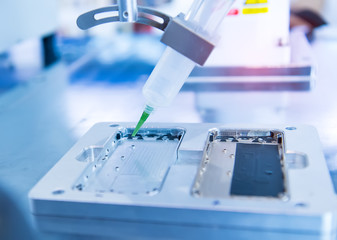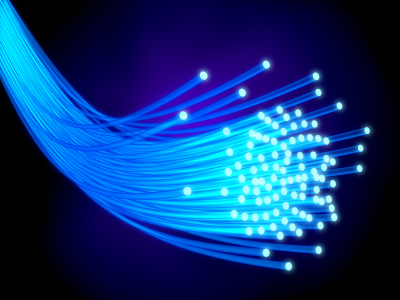In the dynamic world of electronics manufacturing, precision and reliability are paramount. Electronic devices are evolving, becoming increasingly compact and complex, demanding innovative solutions to meet the stringent requirements of modern technology. Ultraviolet (UV) light technology has emerged, offering a range of benefits that enhance the electronic manufacturing process across various sectors. In this article, we’ll explore the advantages of using UV light as a critical component of the bonding process in the electronic industry, with a particular focus on printed circuit boards (PCBs), touchscreen displays, and optical media.
A Brief History of UV Bonding
The use of ultraviolet light in bonding processes can be traced back to the early 20th century when researchers began to explore the unique properties of UV rays. However, it wasn’t until the mid-20th century that the technology found its footing in the electronics industry. Initially, UV bonding was employed for simpler tasks like curing adhesives and sealing components. As technology advanced, UV bonding’s potential was fully realised, and it became a game-changer in manufacturing and assembly processes.
Benefits of UV Bonding in the Electronics Industry
- Rapid Curing
One of the most significant advantages of UV bonding is its rapid curing time. UV light can quickly solidify adhesives and coatings, reducing production cycle times and increasing overall efficiency. This is particularly beneficial in the production of PCBs, where quick curing is essential for high-volume manufacturing.
- Precision Bonding
UV bonding offers exceptional precision in joining various electronic components. It allows for micro-level control, ensuring that delicate components, such as microchips and sensors, are perfectly aligned and securely bonded without excess adhesive.
- Enhanced Bond Strength

UV bonding results in strong and durable bonds. This is critical for electronic devices, where components must remain securely attached despite various stresses, such as thermal expansion and vibrations.
- Minimal Heat Generation
Unlike other bonding methods, UV bonding generates minimal heat during the process. This is vital for sensitive electronic components, as excessive heat can lead to damage or malfunctions.
- Compatibility with Various Materials
UV bonding can be used with a wide range of materials, including glass, plastics, and metals. This versatility makes it suitable for various applications, from touchscreen assembly to optical media production.
Applications of UV Bonding in the Electronics Industry
- Printed Circuit Boards (PCBs)

PCBs are the backbone of electronic devices, and UV bonding plays a crucial role in their production. UV is used to bond components onto the PCB, ensuring reliable connections and a compact design.
- Touchscreens
In the manufacture of touchscreens, UV bonding is employed to join multiple layers, including the touch-sensitive surface, glass cover, and protective coatings. The rapid curing and precision contribute to the durability and sensitivity of modern touchscreens.
-
- Optical Media

Optical media, such as DVDs and Blu-ray discs, rely on UV bonding to secure data layers and protective coatings. The quick curing time ensures efficient mass production.
- Other Electrical Formats
UV bonding is not limited to the aforementioned applications. It is widely used in the assembly of sensors, connectors, and various electronic modules, ensuring reliable and long-lasting performance in a wide range of devices.
Widespread Adoption of UV Technology
UV bonding has become a standard practice in the electronics industry due to its numerous advantages. From large-scale manufacturing facilities to small-scale electronics assembly workshops, UV bonding technology has gained widespread acceptance.
As the technology continues to evolve, UV bonding will become more and more energy-efficient and cost-effective. As electronics become more compact and intricate, the role of UV bonding is set to expand further, cementing its position as a crucial technology in the industry.
The benefits of UV bonding in the electronics industry are evident in its ability to provide rapid curing, precision bonding, enhanced bond strength, minimal heat generation, and compatibility with various materials. UV bonding has established itself as an indispensable tool in the production of electronic devices, ensuring reliability, performance, and efficiency in the ever-evolving world of electronics. As electronic devices continue to advance in complexity and miniaturisation, UV technology is set to play an even more vital role in shaping the future of the electronic industry.
If you have any questions or would like to understand how UV technology can help your production processes please feel free to Contact Us.
Latest Articles
A Busy Year! Alpha-Cure’s 2025 Year in Review
A Year of Global Reach and Innovation for Alpha-Cure As 2025 draws to a close, we’re reflectin...
View ArticleAvoid Holiday Disruption: Key Order Deadlines for Year End Delivery
As we approach the end of the year, production schedules get tighter and distribution channels come ...
View ArticleAll UV Lamps. One Standard: How Alpha-Cure Scaled UK Excellence Globally
When Alpha-Cure expanded our manufacturing footprint to China, it wasn’t about lowering costs, it ...
View ArticleIndustry Focus – Helping Open New Markets for UV Technology
A guide to support local distributor growth At Alpha-Cure, we’re proud of the strong presence ...
View Article